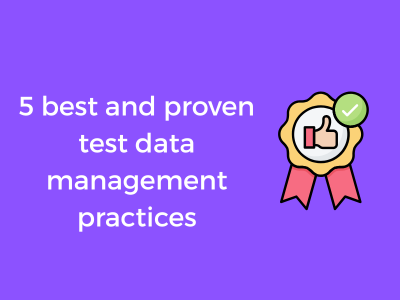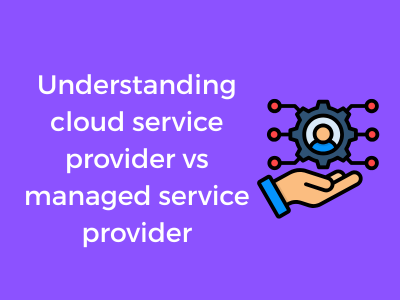Hi there! Let’s get real—managing test data can be a labyrinth if you don’t have a clear plan. That’s why the very first step towards an effective test data management strategy is to craft a clear test data framework. Think of it like building the foundation for a house; if it’s solid, the rest just falls into place. But what does this actually mean, and how can you do it without pulling your hair out? Let’s dive in!
What is a Test Data Framework?
Simply put, a test data framework is your blueprint for managing data in the testing process. It outlines the structure, rules, and guidelines for how test data will be created, used, and maintained. Without it, you’re left guessing what data is needed, leading to mistakes, redundancies, or, worse, testing that doesn’t reflect real-world scenarios.
Why Does It Matter?
Imagine conducting a test with incomplete or inaccurate data. The results wouldn’t be worth much, right? A well-crafted test data framework ensures that:
- You have the right data for the right tests.
- Data is organized and accessible.
- You avoid wasting time creating unnecessary or redundant data.
- Your team is aligned on what data to use and how to use it.
Sounds like a win, doesn’t it?
Steps to Build a Clear Framework
Let’s break it down into actionable steps to make this daunting task less overwhelming:
- Identify Your Testing Requirements: Before you dive into creating or selecting data, consult with your testing team to determine what they actually need. What kind of scenarios are you testing? Do you need large datasets, or will a small subset do the job? This clarity will save you from wasting resources down the road.
- Map Out Data Sources: Figure out where your test data will come from. Will you use real production data, simulated data, or a mix of both? Make sure the source is reliable and relevant to your testing objectives.
- Define Data Rules and Standards: Just like a good recipe requires specific ingredients, your data framework should include rules for creating, maintaining, and archiving data. Outline naming conventions, data validation rules, and criteria for deleting outdated datasets.
- Leverage Centralized Repositories: Store all your test data in one place—preferably using tools designed for test data management. This makes it easier for teams to find and use the data they need without duplication or confusion.
- Document Everything: This might be the least exciting step, but trust me—it’s the most vital. Maintain thorough documentation of your framework, so that your team can reference it at any time. This is particularly helpful for onboarding new team members or supporting cross-functional collaboration.

Prioritizing Data Security in Test Environments
Hello there! Let’s talk about why data security in test environments is not just important but absolutely critical. When we handle test data, it’s easy to focus solely on making sure everything works as intended, but have you ever stopped to think about the sensitive data at stake in these environments?
Test environments often mimic real-world systems, which means they might inadvertently hold a treasure trove of sensitive information—think personal customer data, financial information, or confidential company secrets. If this isn’t secured properly, it could lead to breaches that no organization wants to face. So, let’s dive into some simple yet highly effective practices to safeguard test data!
Why Data Security Matters in Tests
Imagine this: you’re testing a new app prototype, and you upload a database full of customer details. It sounds harmless, right? But if that testing system gets compromised, you’ve handed cybercriminals a goldmine. Real-world data, even in test systems, could be as vulnerable as it is in production environments. A breach here doesn’t just impact internal operations but can damage your organization’s reputation and lead to hefty fines.
So, your ultimate goal should be to apply the highest level of protection to your test environments, just as you would in your live systems.
Best Practices for Securing Test Data
- Use Synthetic Data Wherever Possible: While it may be tempting to use real-world data for testing, a safer approach is to create synthetic data that mimics real data without containing sensitive details. Tools exist to help generate this kind of data effectively.
- Mask or Anonymize Sensitive Data: If you must use real-world data, ensure it’s masked or anonymized. This means stripping or scrambling identifiable details (like customer names, account numbers, or contact details) to make it unintelligible to anyone without the “key” to decode it.
- Limit Data Access: Not everyone on the testing team needs unlimited access to your test data. Adopt a “least privilege” principle by granting access only to those who genuinely need it.
- Consider Encrypted Test Environments: Encrypt your test environments and ensure data, whether at rest or in transit, is protected using the strongest encryption protocols available. This step alone can add a substantial layer of security.
- Regularly Scrub Test Data: Ensure that sensitive test data is purged from your systems after use. Keeping this data lingering around makes it an easy target for breaches.
Secure from Start to Finish
When setting up a test environment, think security at every step. From designing the test system to executing tests and finally decommissioning data—it’s all part of maintaining a secure ecosystem. Train your team about secure test data handling protocols and create a culture that values data security.
Oh, and don’t forget to keep your environments up to date! Missing security patches or outdated configurations in test setups can create vulnerabilities. Make security checks a routine rather than a one-off activity.
Strategically Reducing Redundant Data
Hello there, data enthusiasts! Let’s have a friendly chat about one of the most game-changing yet often overlooked aspects of test data management: reducing redundant data. Trust me, if you’ve got a mountain of test data sitting unnecessarily in some obscure corner of your environment, you’re probably dragging your productivity down. Fear not! Together, we’ll dig into why redundant data can be a problem and, most importantly, how to strategically cut it down to size like a pro.
Why is Redundant Data a Dealbreaker?
Imagine trying to find your favorite book in an overflowing library where half the shelves are packed with duplicates of the same title. Frustrating, right? Redundant data has the same effect in a test environment. Too much replication clutters your system, consumes storage, slows performance, and complicates test execution. And let’s face it—who wants to sift through repeat data just to run a clean test?
Beyond the logistical headaches, duplicated information can lead to inaccurate test results. This happens because redundant data skews your test scenarios, potentially making them less aligned with the real-world experience. That’s why it’s vital to keep things tidy by cutting down on unnecessary duplicates.
Steps to Streamline and Minimize Redundancy
Alright, now for the fun part: how to tackle redundant data head-on like the data management champion you are! Here’s a handy guide to reducing overlaps:
- Start with a data inventory: Kick off by auditing your test data. Identify which data sets are useful, which are outdated, and (most importantly) where duplicates are lurking. This creates a snapshot of what you’re working with.
- Define a single source of truth: Designate a master database or source of record for your test data. By centralizing things, you avoid the age-old “multiple versions of the truth” problem—which is a huge redundancy culprit.
- Deduplicate proactively: Use tools like ETL (Extract, Transform, Load) processes to filter out repeat records during transfers. Don’t have manual tools yet? Consider testing data deduplication software for smarter solutions!
- Use test data obfuscation: Where identical datasets serve as placeholders in multiple test scenarios, differentiate them with obfuscation techniques. This ensures uniqueness without disrupting data attributes.
- Archive historical data: Don’t worry, you don’t have to permanently delete useful historical data! Archive such datasets separately. This keeps your active test environment lean while giving you access to older data if needed.
The Sweet Benefits of Decluttering Test Data
Once you’ve cleared out the unnecessary clutter, your test environment becomes a well-oiled machine. Here’s what you’ll notice:
- Faster test runs: With less data to process, your tests will execute faster and more efficiently.
- Improved accuracy: Without redundant records crowding the space, your test results will mirror real-world conditions more closely.
- Better resource utilization: You’ll free up precious storage and computational resources for meaningful operations.
- Easier collaboration: A streamlined data environment makes life simpler for development and QA teams alike.
Automating Test Data Preparation Efficiently
Let’s talk about something that can truly save both your sanity and precious time – automating your test data preparation process. If you’re working with copious amounts of test data, doing everything manually can start to feel like climbing a never-ending mountain. Automation is your magic carpet that takes you to the other side in style. Here’s why and how!
Why Automating Test Data Preparation Matters
Imagine spending hours or even days setting up data for testing, only to realize you’ve made an avoidable error or missed out on something critical. Automation minimizes such mishaps and, even better, accelerates the entire testing process. This means you can focus more on improving software quality than drowning in data logistics.
Beyond just speed, automation also ensures consistency. Unlike manual processes, machines don’t forget details or take shortcuts. This means your test data will be more reliable and consistent – a critical factor in producing meaningful test results.
But wait, there’s more! When your teams spend less time preparing test data, you’re essentially freeing up resources to focus on innovation, testing edge cases, or exploring advanced practices that can make your product even better. The efficiency gained truly compounds over time!
Steps to Automate Test Data Preparation Effectively
So, how do you do it? Here’s a streamlined roadmap:
- Identify Repetitive Tasks: Start by pinpointing areas in your test data preparation that seem like a rinse-and-repeat task. Whether it’s generating dummy data, masking sensitive information, or cleaning datasets, these are prime candidates for automation.
- Choose the Right Tools: There’s no shortage of automation tools out there, from open-source frameworks like Selenium to enterprise-grade platforms such as TestComplete. The right tool depends on your organization’s needs and technical expertise. Keep scalability and ease of integration in mind when making your decision.
- Set Up Reusable Test Data Templates: Create templates for commonly used test datasets. When automated scripts can populate these templates for you, the savings in time and effort will be enormous.
- Leverage AI/ML for Smart Data Generation: For advanced scenarios, consider using AI or machine learning tools that can analyze your existing datasets and generate realistic, varied, and contextually accurate test data.
- Monitor and Maintain: Automation isn’t necessarily a “set it and forget it” solution. Regularly audit your scripts and tools to ensure they’re keeping up with the evolving requirements of your test environments.
Balancing Data Subsets for Real-World Accuracy
Ah, balancing data subsets – the unsung hero of successful test data management! If you’ve been treating your dataset like an all-you-can-eat buffet, piling on mixed-quality data without rhyme or reason, it’s time to shift gears. Let’s chat about why balance isn’t just for yoga, but also for building a rock-solid testing framework.
Why Balance Matters
Imagine this: you’re testing a mobile app that’s meant for 10,000 users. Your data subsets, however, only reflect the needs of 100. While it’s tempting to work with limited datasets for quicker turnaround, you’ve essentially set up your app for failure in the real world. Conversely, using too much data – or irrelevant chunks of it – could clog your testing processes and affect efficiency.
Balanced data subsets deliver that sweet spot. They ensure your tests reflect real-world usage without overwhelming testers or missing critical scenarios. Think quantity meeting quality, perfectly.
How to Get It Right: Best Practices
Building a balanced dataset may seem daunting, but trust me, with the following tips, you’ll be picking subsets like a pro:
- Diversify Your Samples: Your dataset should reflect your actual user base. Are your users spread across different locations, devices, or OS versions? Include this diversity in your subsets! For example, if 30% of your users use an iPhone, your subset should mirror that proportion.
- Focus on Edge Cases: A balanced subset isn’t just about the average user; it should also include edge cases. These could be low-bandwidth users, last-generation devices, or extreme usage patterns. Ignoring these can leave you vulnerable to surprise bugs!
- Use Historical Insights: Lean on past data to identify patterns and anomalies. By including similar trends in your test subsets, you’ll uncover issues before they reach your production environment. Analysts, this is your moment to shine!
- Pick the Right Size: Figure out the smallest amount of data needed to comprehensively test your application. This ensures you’re capturing all real-world scenarios without bogging down the process. It’s all about efficiency!
Tools of the Trade
If you’re feeling overwhelmed, don’t fret. Technology has your back! From tools like Informatica to Delphix, modern test data management platforms can automatically help you create balanced subsets. They make finding that “Goldilocks zone” of data – not too big, not too small – much easier.
Regular Audits to Keep Data Fresh
Let’s get real for a moment. Test data tends to get old, stale, and well, a little “out of shape,” over time. If you aren’t giving your test data routine checkups, you might be setting yourself up for inefficiencies and inaccuracies in your testing process. That’s where **regular audits** come into the picture. Think of audits as the gym sessions for your data—they keep it in peak condition and ready for action!
Why Are Test Data Audits So Important?
Your test data is a critical ingredient in delivering quality software. But using outdated or irrelevant data is like trying to bake a cake with expired flour—it might still work, but the results are far from ideal. Regular audits serve two major purposes:
- Identifying and removing invalid or outdated data, which reduces noise in testing processes.
- Ensuring that the test data reflects **real-world, current scenarios.** After all, software behaves in unpredictable ways when using incomplete or irrelevant data.
By keeping your test data fresh, you’re ensuring your tests remain reliable and representative of actual user scenarios. It’s also worth noting that audits can highlight security vulnerabilities—old data can sometimes unintentionally expose sensitive or unnecessary information.
Building a Consistent Audit Process
Establishing a routine data audit doesn’t have to be complicated! Following a structured plan ensures audits are thorough and hassle-free. Here’s a step-by-step recipe for effort-free test data audits:
- Set an Audit Schedule: Whether it’s monthly, quarterly, or tied to release cycles, regularity is key. Mark those calendar reminders—this isn’t an “I’ll get to it someday” item.
- Define Audit Goals: Know what you’re looking for. Are you simply purging old data? Ensuring compliance with regulations like GDPR or CCPA? Or ensuring the dataset remains diverse and unbiased?
- Involve Stakeholders: Team alignment always boosts audit efficiency. Engage data architects, test managers, or anyone whose expertise makes audits smoother and more comprehensive.
- Leverage Tools: Let’s not live in the Stone Age—there are great tools designed to help analyze datasets. Use automated tools to check for redundancy, stale data, or compliance issues.
- Document Everything: Keeping a record of what you’ve audited, what was outdated, and what changes were made creates transparency and assists in future audits.
Quick Wins for Keeping Test Data Fresh
Not ready to commit to a lengthy audit cycle just yet? No problem! Here are some quick actions you can prioritize to maintain the quality of your test data:
- Clean as You Go: Perform mini-audits after specific test phases—a bit like tidying up your desk at the end of the day.
- Identify Aging Data: Know which datasets have lifespans and set triggers to revisit or refresh them when they approach expiration.
- Monitor Historical Trends: Audit results over time can help you anticipate what areas might become problematic in the future.
Remember, your audit process doesn’t have to be perfect—it just needs to get done. Some attention is always better than none.
Collaborative Alignment Across Your Teams
Let’s talk teamwork! Successfully managing test data doesn’t happen in a vacuum—it requires seamless collaboration across all the moving parts of your organization. In essence, unless everyone is on the same page, your efforts to create robust test data could fall short. So, how can you ensure harmony among your teams?

Break Down Silos
One of the buzzwords flying around corporate corridors is “breaking down silos.” But what does this mean for test data management? Simply put, different teams—in QA, development, operations, and management—often operate in isolation, rarely interacting or understanding one another’s priorities. This isolation can lead to missed opportunities for synergy.
To avoid this, encourage cross-functional discussions around test data. For instance: QA could benefit from input about edge cases that developers encounter; conversely, developers could leverage production insights that operations teams often oversee. By fostering a culture of shared knowledge, you’ll end up with more cohesive and effective testing strategies.
Assign Clear Ownership
Confusion happens when no one’s sure who’s responsible for what. Who owns test data creation? Who oversees data masking? Who handles compliance? Without clear accountability, your process may hit roadblocks.
Identify who’s in charge of each aspect of test data management. This doesn’t need to be a single person—it could be a dedicated sub-group within each team that regularly liaises with others. A structured ownership model prevents bypassed steps and mitigates the chances of surprises at the last minute.
- Assign clear roles within each team.
- Create a shared responsibility matrix for managing test data tasks.
- Regularly update everyone on any changes to roles or responsibilities.
Create Open Communication Channels
Here’s where things get interesting—creating open, two-way communication might sound simple, but it’s easier said than done. Tools like Slack, Microsoft Teams, or dedicated project management platforms can enable constant touchpoints. But, keep this golden rule in mind: don’t just message—meaningfully engage!
Collaborative workflows have a bonus—if someone hits a hurdle, others in the loop can potentially offer quick solutions. The faster blockers are addressed, the faster your test data can be created, validated, or refined.
Scheduled Check-Ins Work Wonders
Make collaboration proactive by scheduling regular review sessions for your test data management processes. These meetings ensure everyone—QA testers, software engineers, operations, and even the compliance team—has clarity on the goals, progress, and challenges. Think of it as a pit stop for your team to get back in sync.
- Set a recurring meeting at key points in a project’s lifecycle.
- Focus on problem-solving rather than finger-pointing.
- Leverage these sessions to surface small inefficiencies before they snowball.
Measure Collaboration Outcomes
Lastly, don’t forget to analyze the outcomes of your collaborative efforts. Are turnaround times improving? Is there better coordination between test data stakeholders? Keeping a pulse on these metrics can help you tweak your collaboration process to ensure optimal results.











